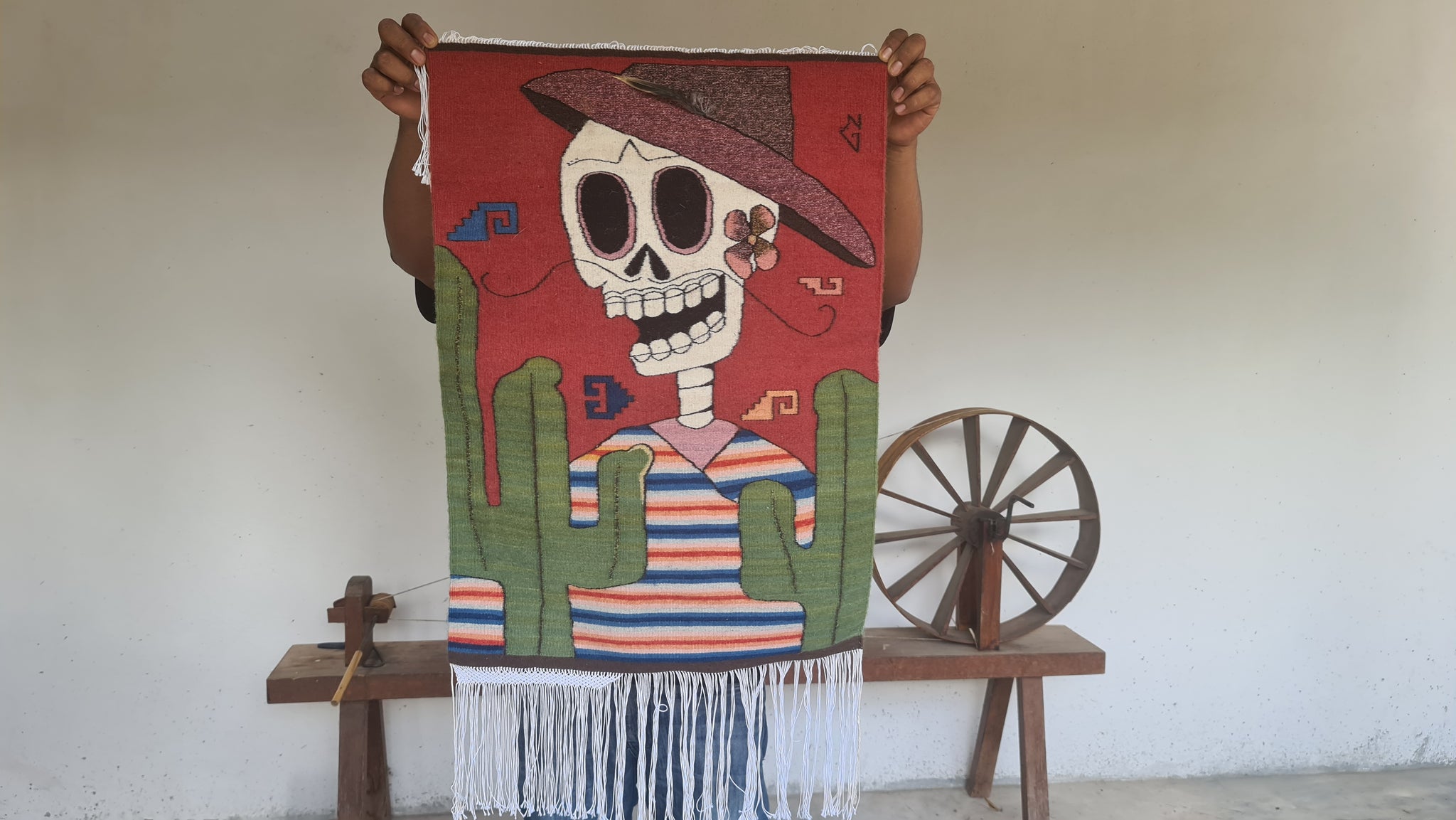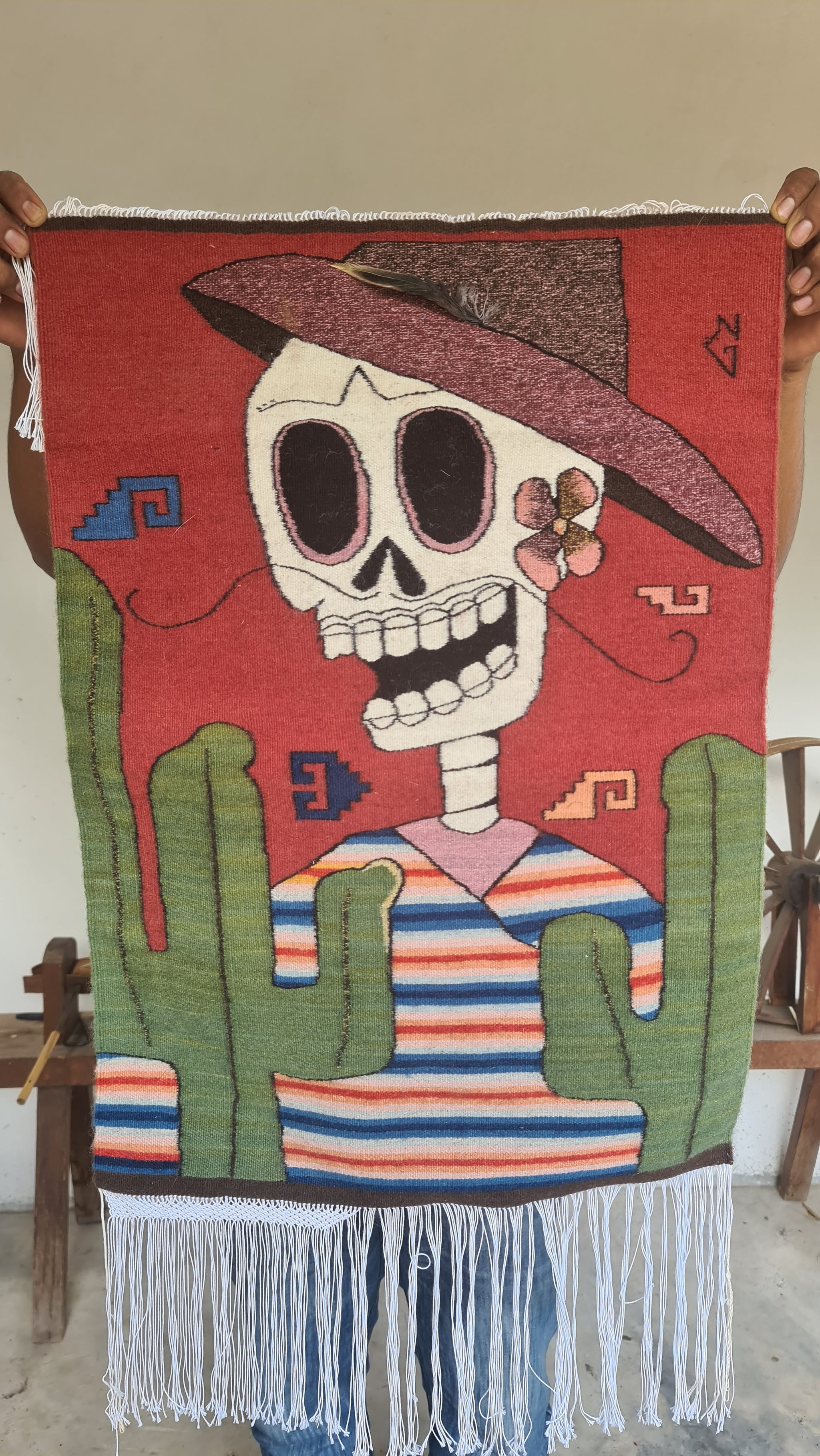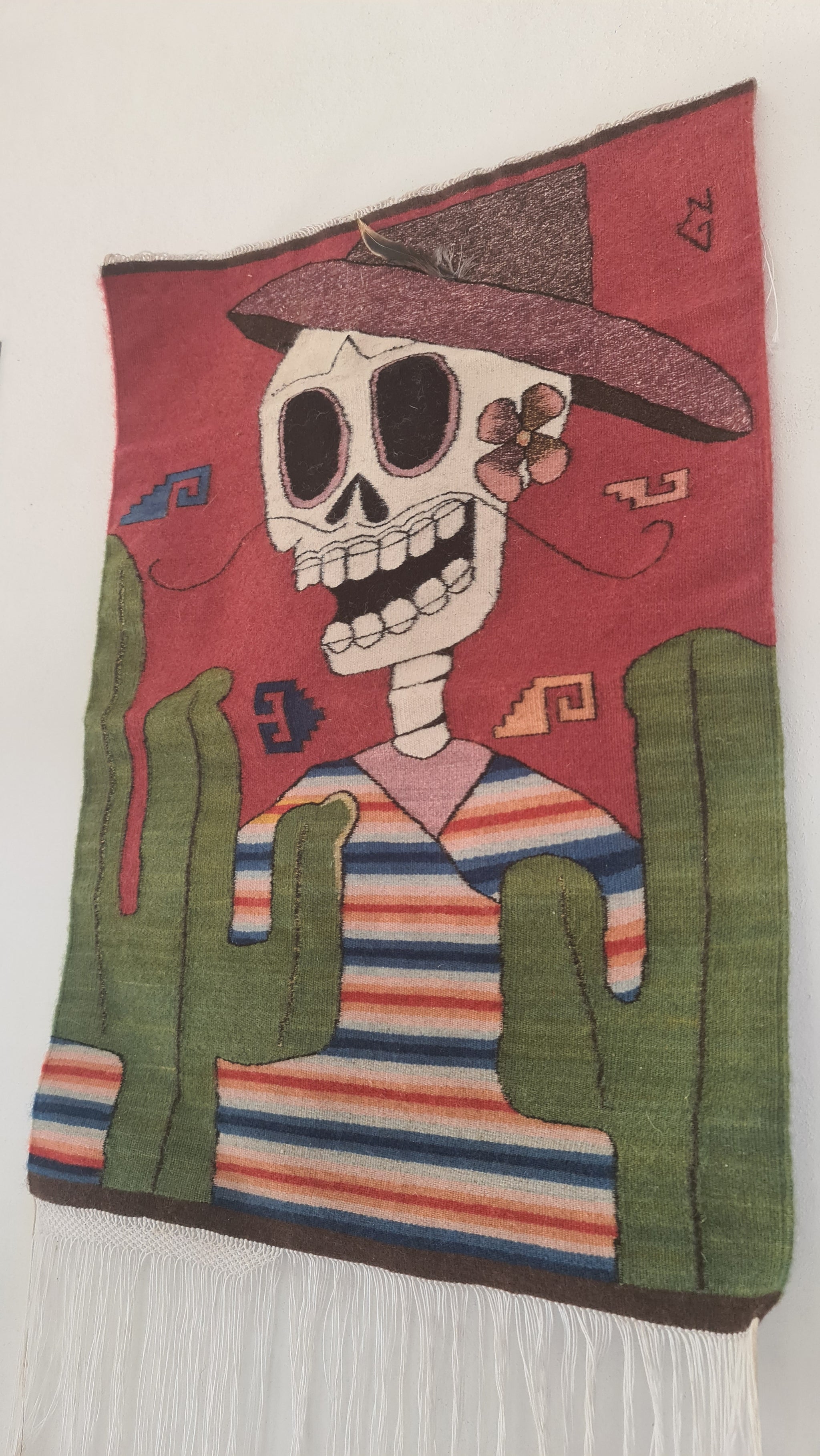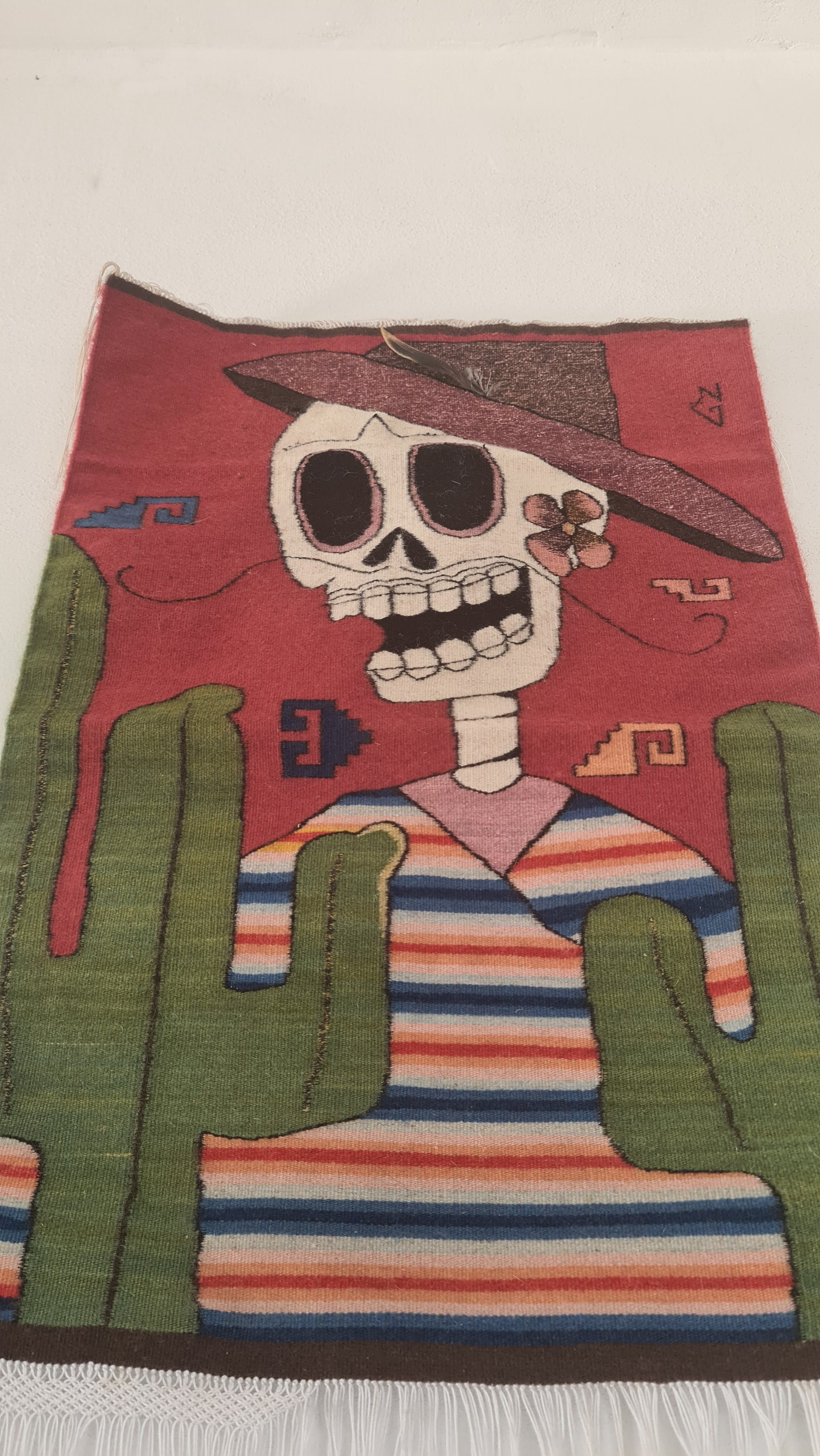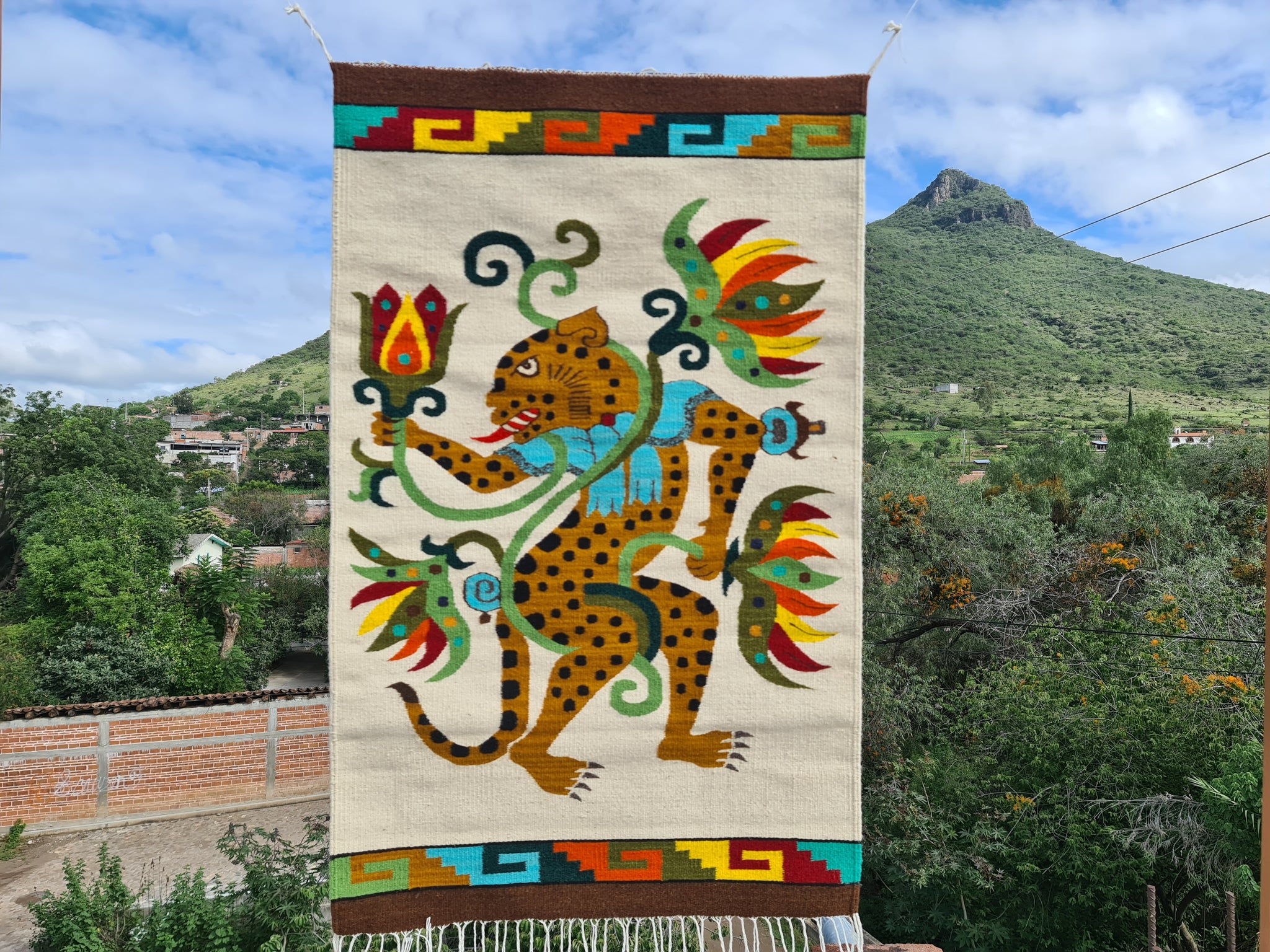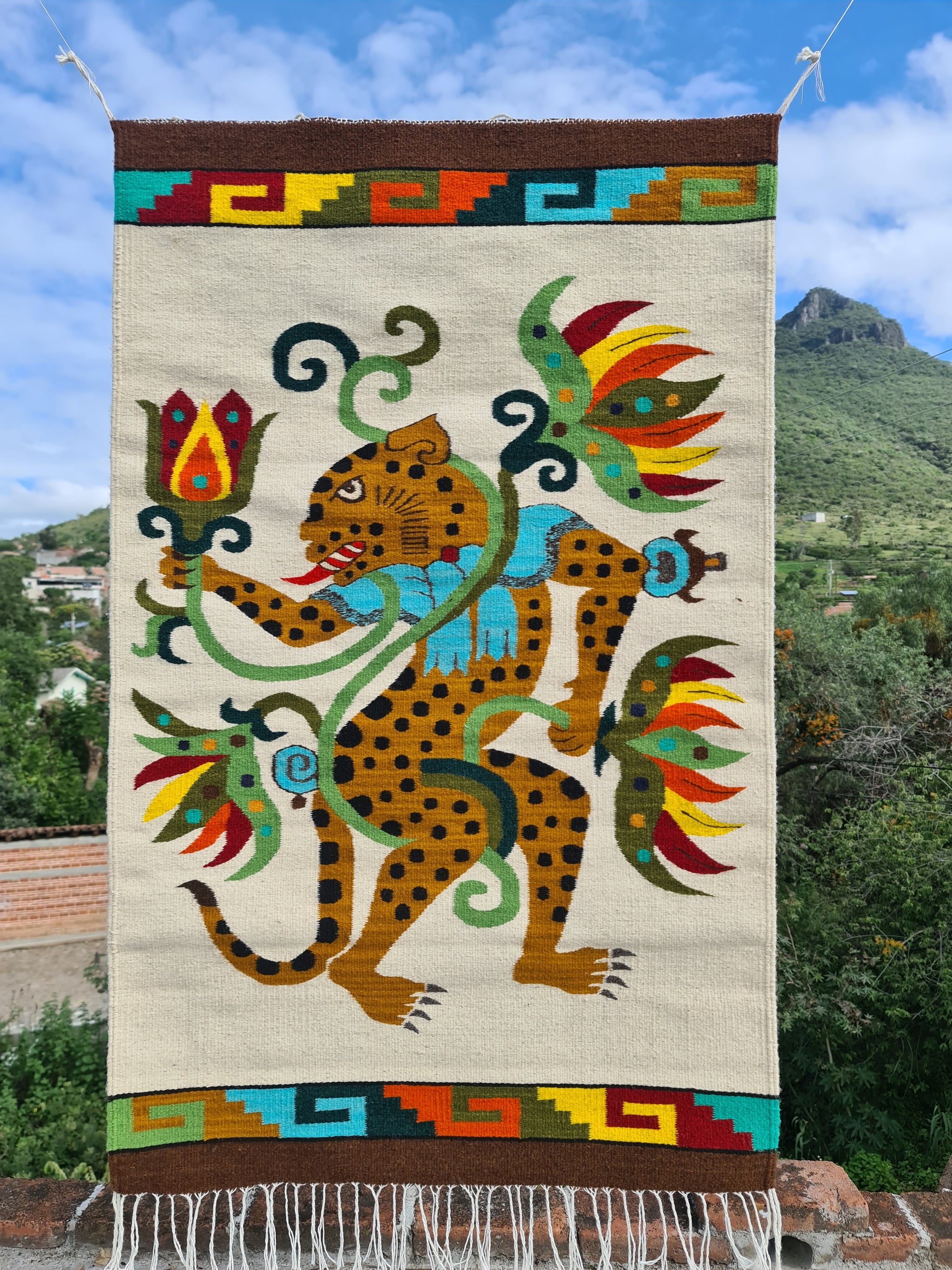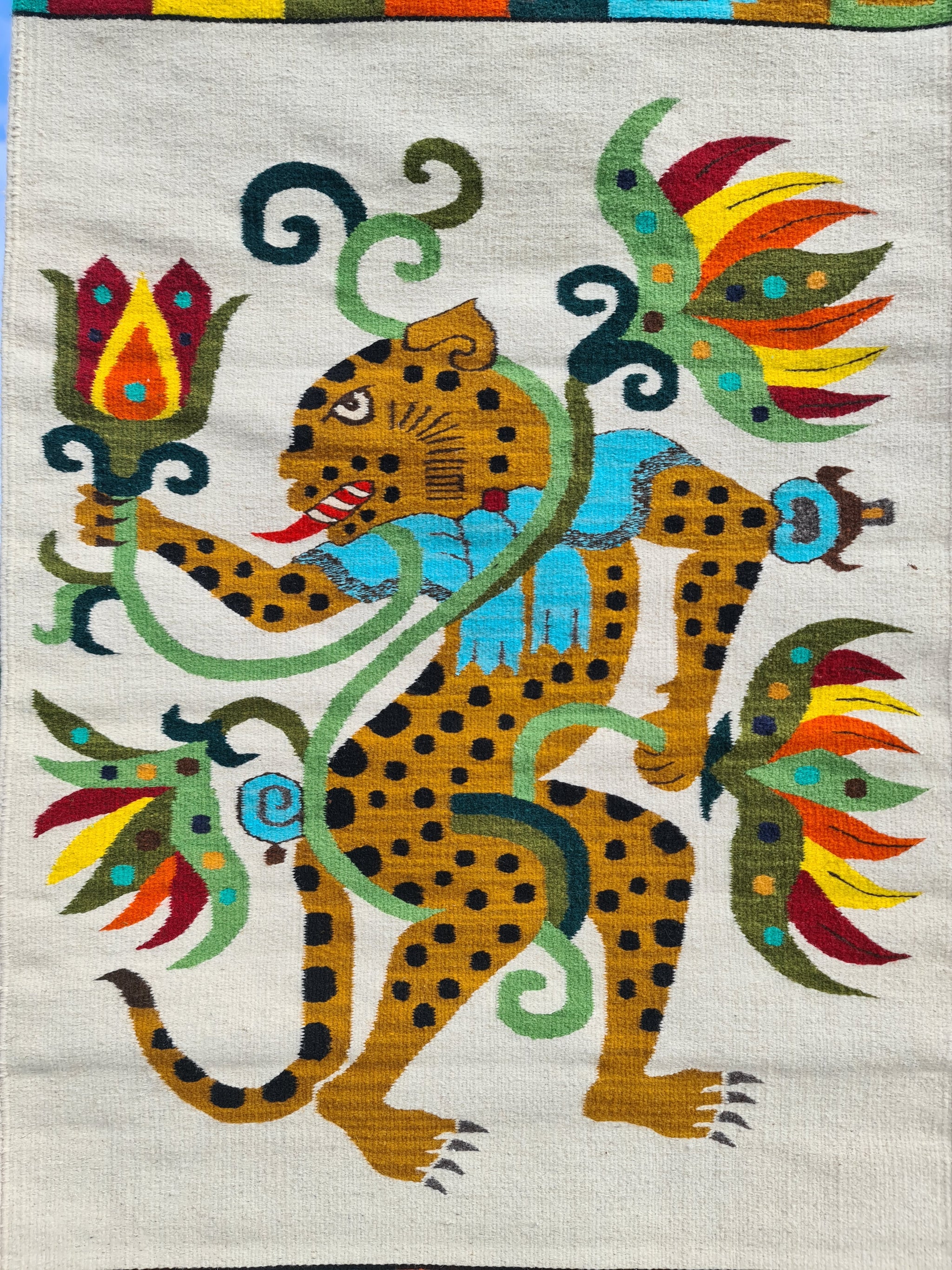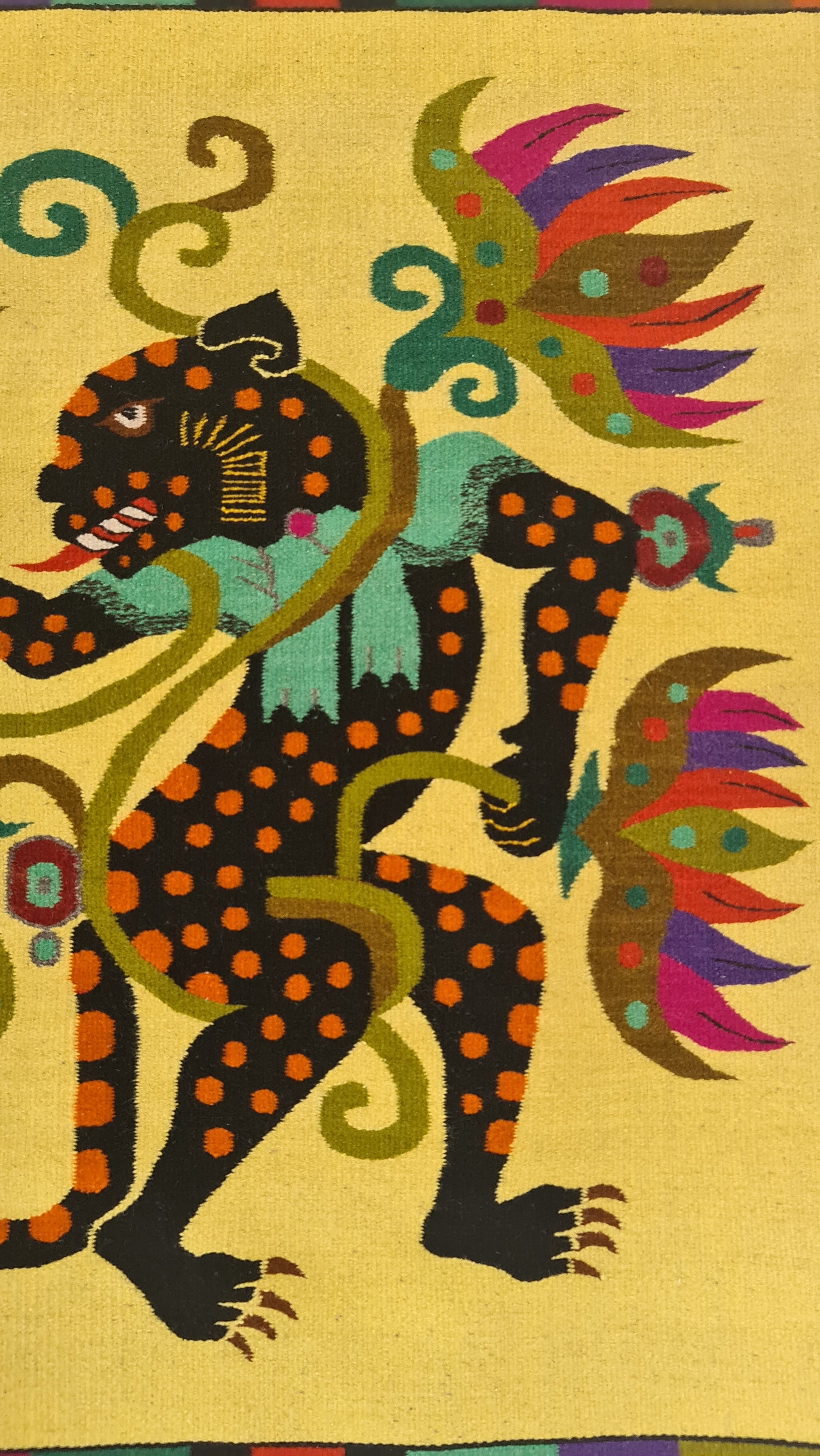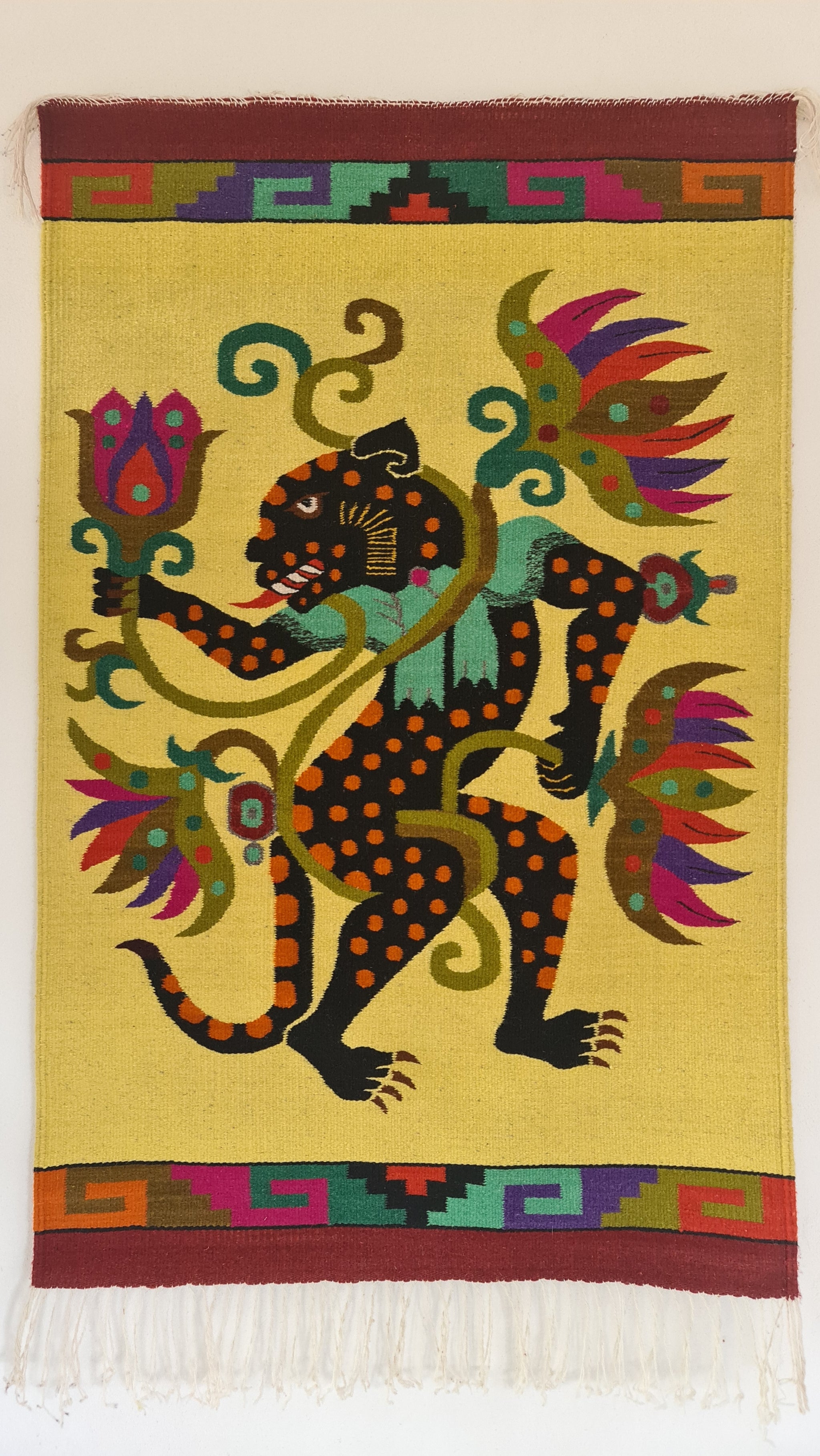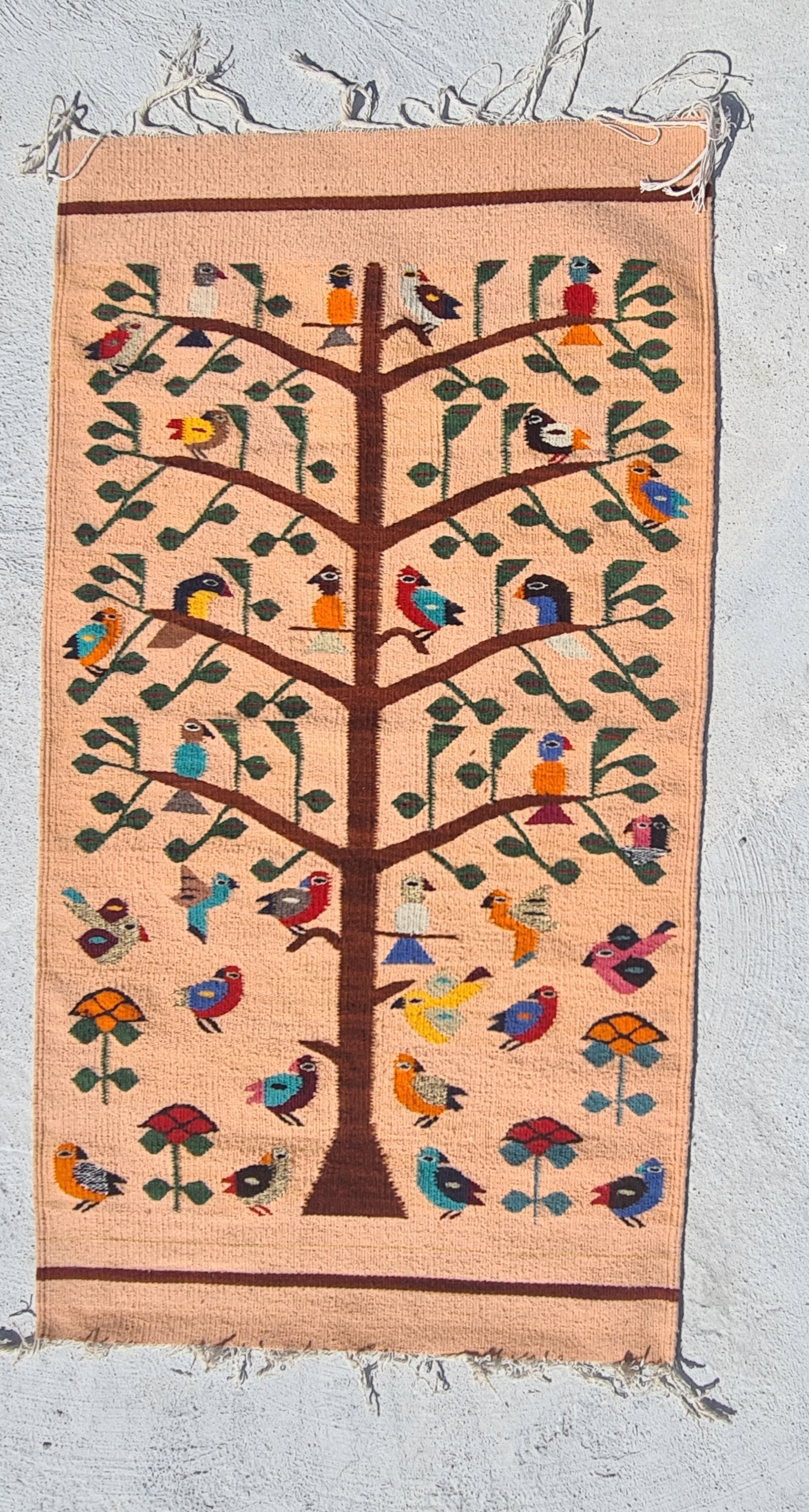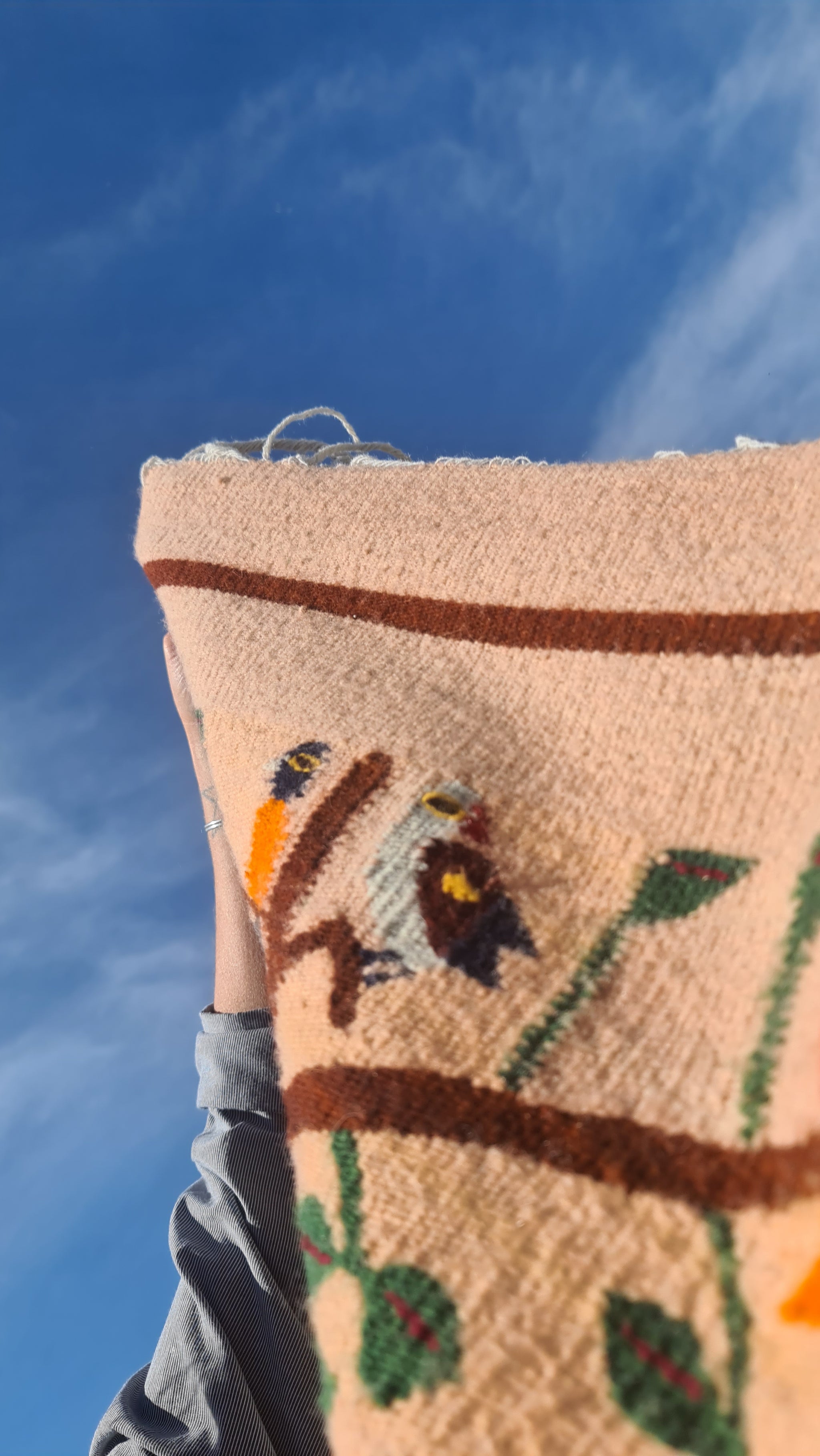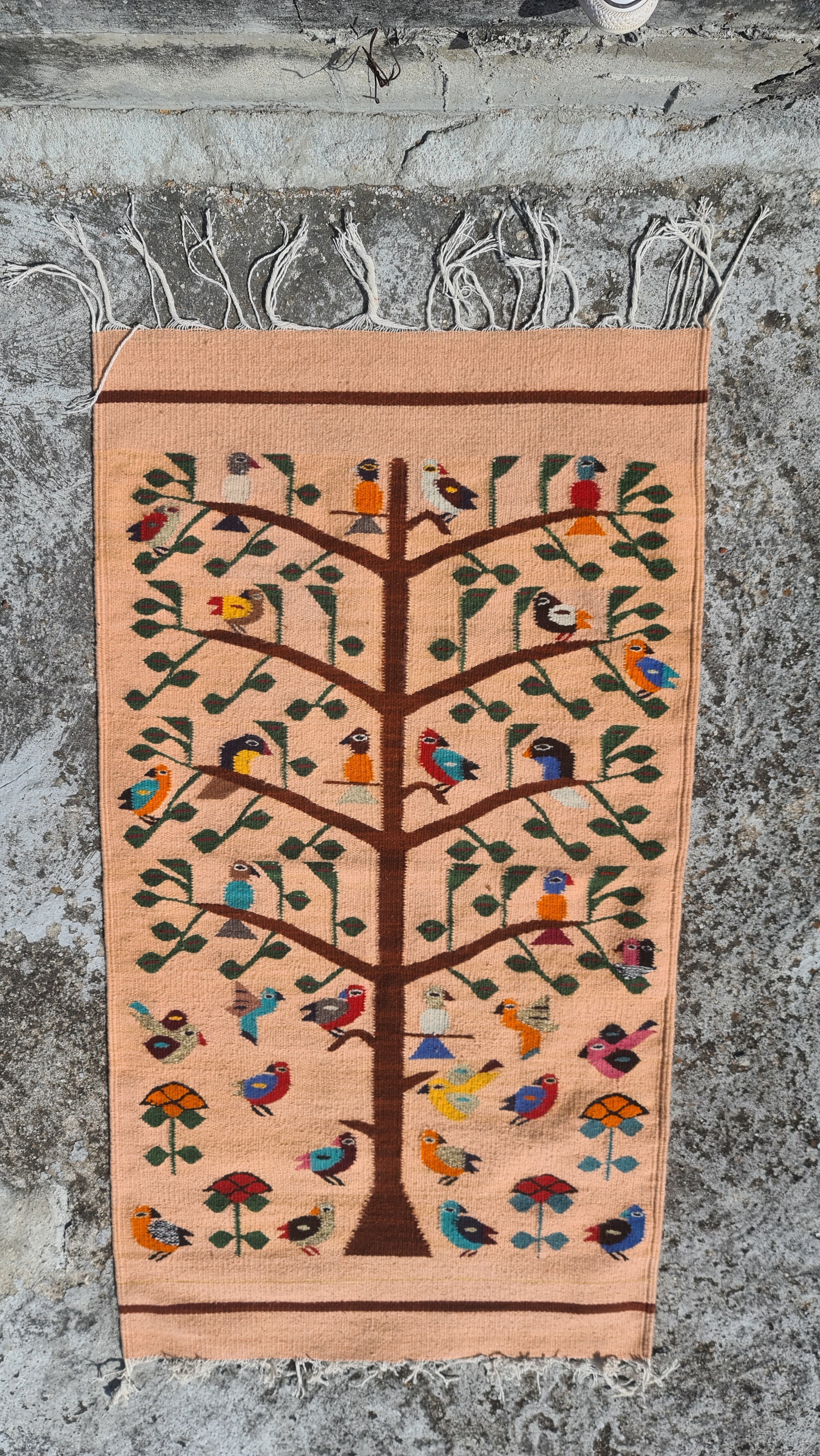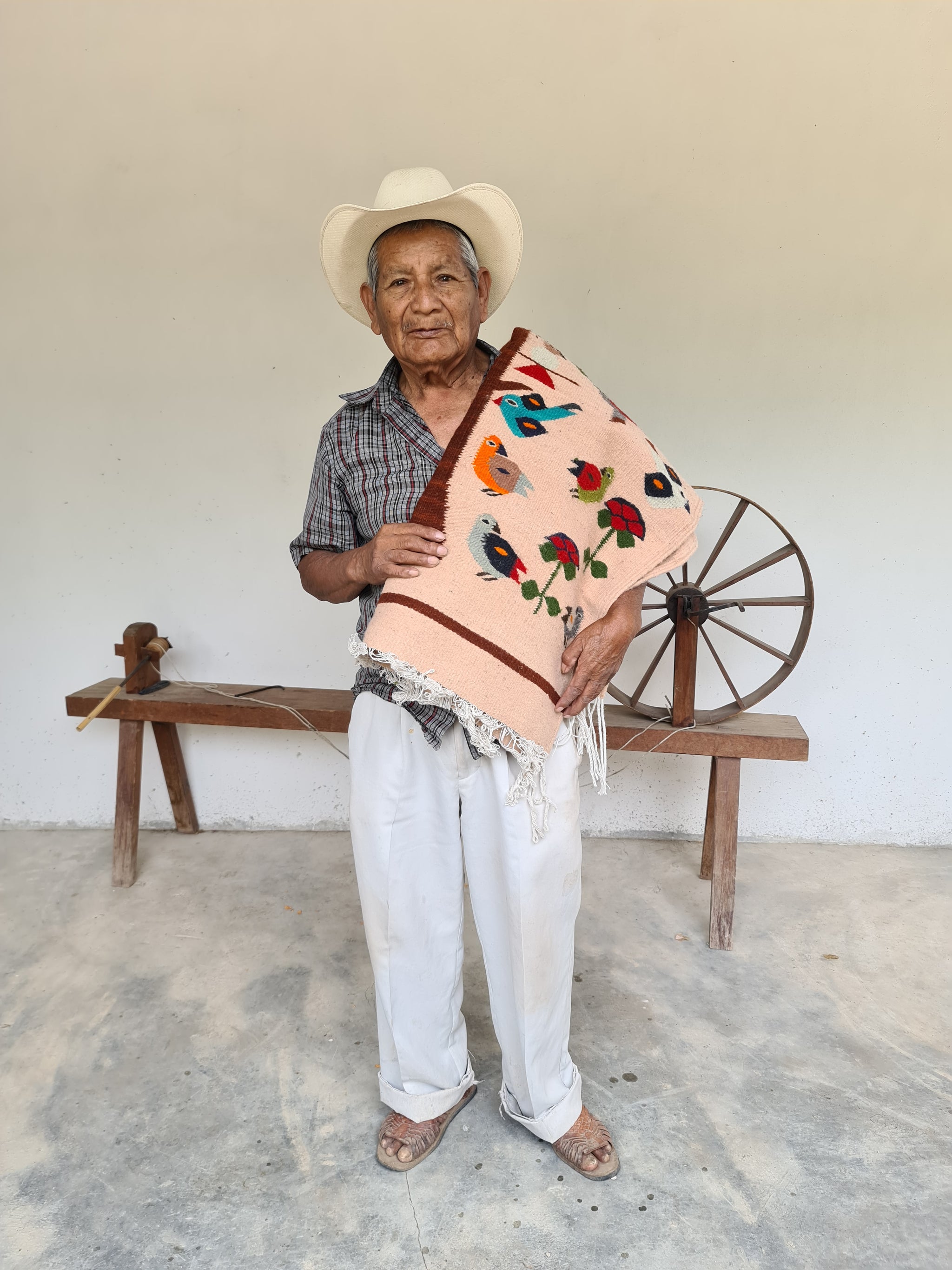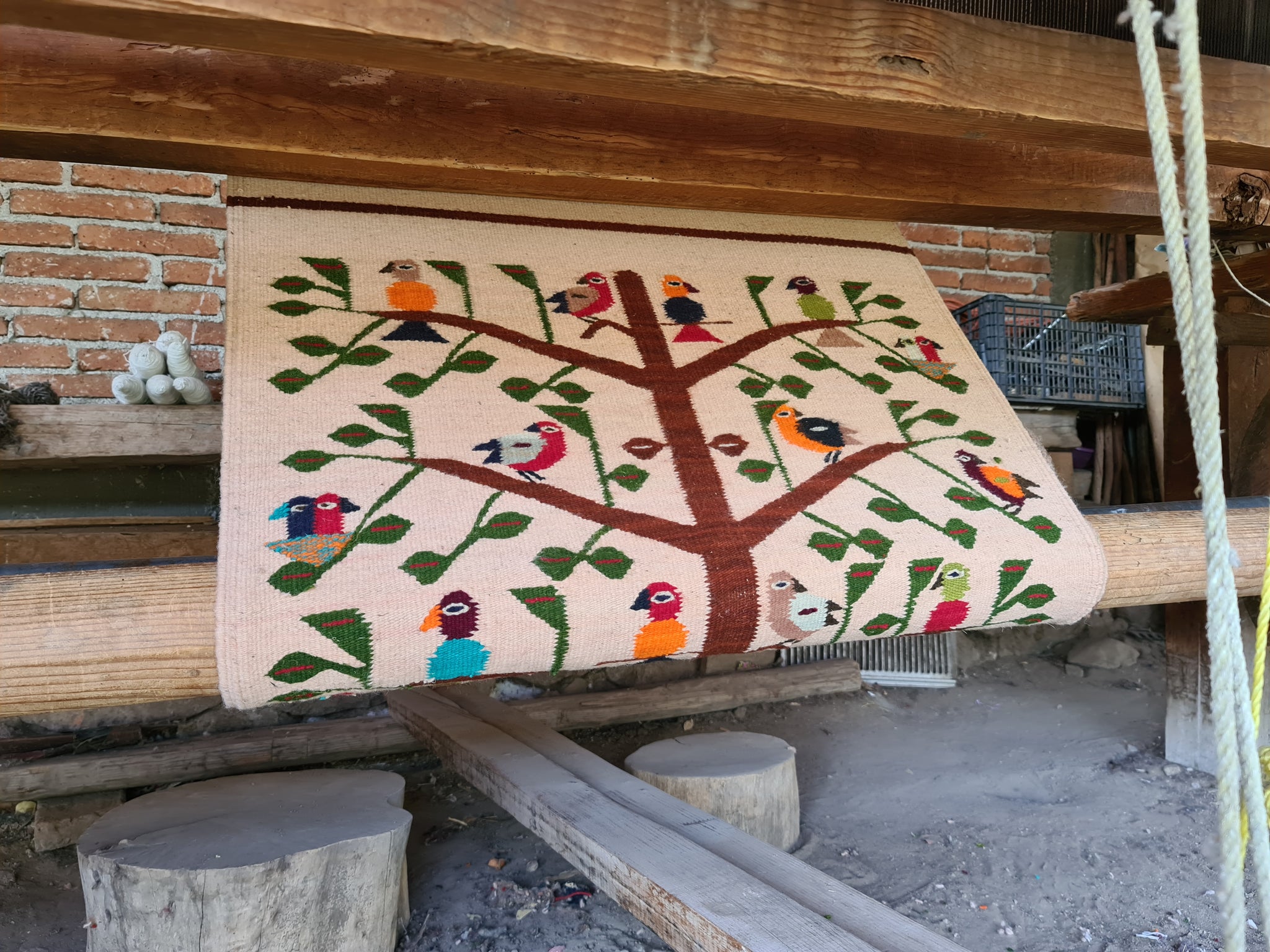Size: 50x71cm; 19.6"x 28"
Weaver: Gerardo Gutierrez
Materials and methods: angora goat and fine sheep wool hand dyed with natural dyes: Bèé (cochineal), Yagshi[i (seep willow), Yauhtli (tagetes lucida) and Xiuhquilitl (indigo) . Handwoven on a Zapotec style loom of the 16th century adapted from European styles. Woven using a 16 threads per inch reed and cotton threads for the warp.
Design, patterns and symbols.
This design depicts the spirit of Nà'a Tuguúl, Día de Muertos, Day of the dead. In our language it translates as the time of the ones yet to be born, yet to be matured, this idea is depicted in te four life cycle symbols woven in the rug. In the right upper corner, a life cycle symbol has five segments representing a spirit that reached 65 years of maturity. In the lower left corner, a life cycle symbol has six segments that add up to 78 years of maturity, this one has a double life cycle pattern with one pointing downwards to the underworld telling of a life story that had also developed with the lords of the underworld in darkness of existence. The other two life cycle symbols represent the life of a warrior taking that inner journey of discovery to find a true face and true heart while facing our darkness. This path of the warrior is the everyday struggle to let our spirit flourish; akin to the struggle of our body against gravity. Living life like a warrior means embracing our own death in the present moment, living as if each moment could be out last moment on earth, living in this way, when we are grounded, brings the best of our qualities and skills because our consciousness is fully present and engaged. In that state, our spirit starts to blossom. Warriors know they are mere mortals living a short existence, just like the wild flowers that emerge from the earth in autumn when dia de muertos takes place, those flowers grow to flourish for a few days only to return to the soil, the underground, and so complete their cycle of life and death.
The cactus represents the ideal of a long lived life that flourished and has prolonged death to the maximun, our ancestors took pride in living long, healthy and beautiful lives. They took great care of their bodies using plants to heal, temazcal sessions, regular massage and they pay so much attention to what the ate. For instance, there are specific days to eat meat, traditionally one could eat red meat on Fridays and Saturdays, pork on Sundays, porck scratchings on Monday, dry meat any time, but mondays and tuesdays preferably no meat. They ate fruit at midday and if they drank chocholate for breakfast they would not eat avocadoes in the same meal. They payed attention to all the little details like that and really try to avoid sudden temperature changes unless it was for healing and with purpose. When tombs are reused in cemmeteries our people are often amazed about the healthy and strong teeth that elders had not too long ago, probably due to a better diet, i.e. not too much sugar.
There are towns in Mexico where they keep the bones of their deseased relatives and pull them out to clean them and honour them during dia de muertos. Because we are the living breath of our ancestors, we carry on the stories they told us and as long as we remember them, they will live with us.
